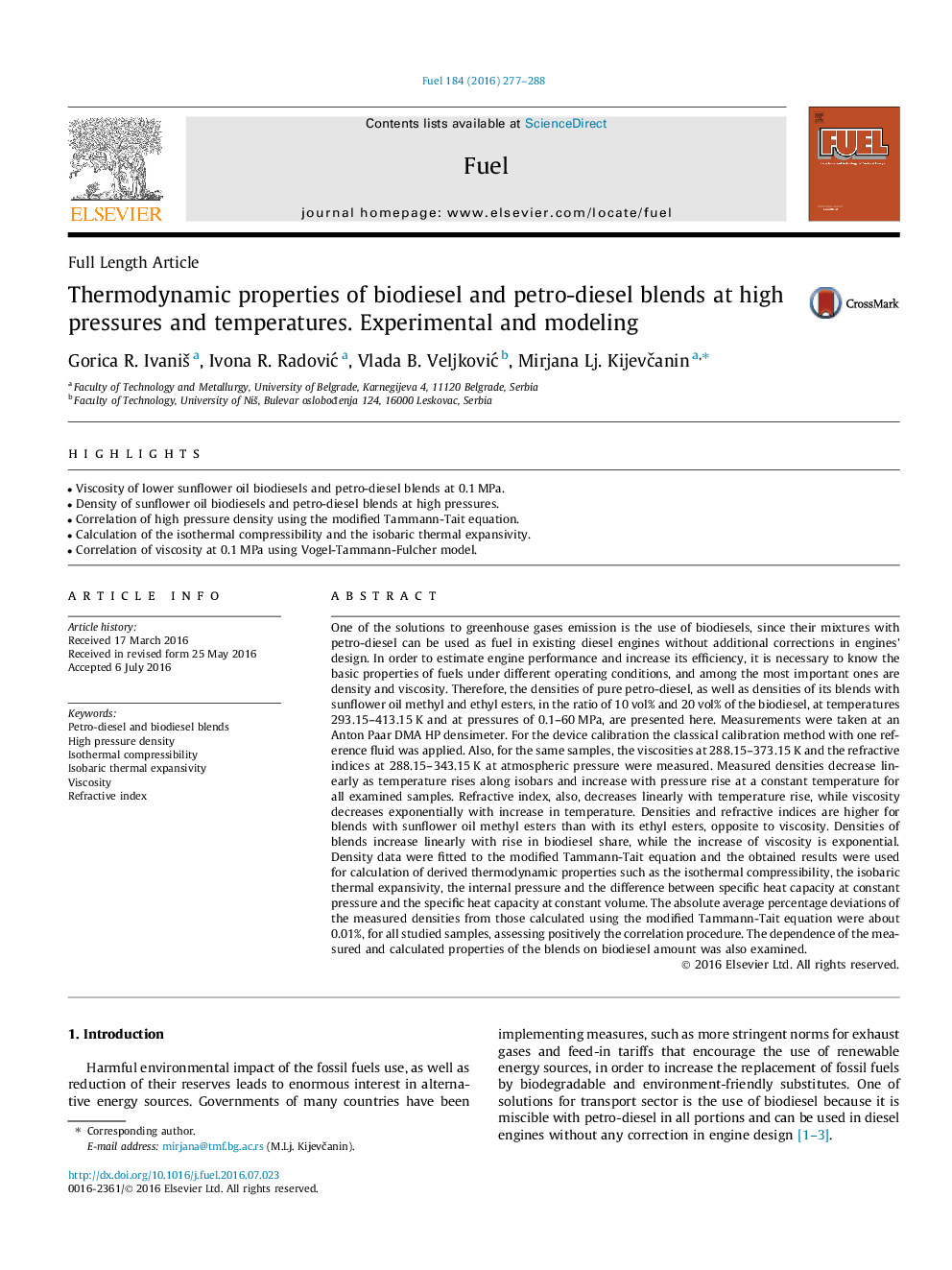| Article ID | Journal | Published Year | Pages | File Type |
|---|---|---|---|---|
| 6633007 | Fuel | 2016 | 12 Pages |
Abstract
One of the solutions to greenhouse gases emission is the use of biodiesels, since their mixtures with petro-diesel can be used as fuel in existing diesel engines without additional corrections in engines' design. In order to estimate engine performance and increase its efficiency, it is necessary to know the basic properties of fuels under different operating conditions, and among the most important ones are density and viscosity. Therefore, the densities of pure petro-diesel, as well as densities of its blends with sunflower oil methyl and ethyl esters, in the ratio of 10Â vol% and 20Â vol% of the biodiesel, at temperatures 293.15-413.15Â K and at pressures of 0.1-60Â MPa, are presented here. Measurements were taken at an Anton Paar DMA HP densimeter. For the device calibration the classical calibration method with one reference fluid was applied. Also, for the same samples, the viscosities at 288.15-373.15Â K and the refractive indices at 288.15-343.15Â K at atmospheric pressure were measured. Measured densities decrease linearly as temperature rises along isobars and increase with pressure rise at a constant temperature for all examined samples. Refractive index, also, decreases linearly with temperature rise, while viscosity decreases exponentially with increase in temperature. Densities and refractive indices are higher for blends with sunflower oil methyl esters than with its ethyl esters, opposite to viscosity. Densities of blends increase linearly with rise in biodiesel share, while the increase of viscosity is exponential. Density data were fitted to the modified Tammann-Tait equation and the obtained results were used for calculation of derived thermodynamic properties such as the isothermal compressibility, the isobaric thermal expansivity, the internal pressure and the difference between specific heat capacity at constant pressure and the specific heat capacity at constant volume. The absolute average percentage deviations of the measured densities from those calculated using the modified Tammann-Tait equation were about 0.01%, for all studied samples, assessing positively the correlation procedure. The dependence of the measured and calculated properties of the blends on biodiesel amount was also examined.
Keywords
Related Topics
Physical Sciences and Engineering
Chemical Engineering
Chemical Engineering (General)
Authors
Gorica R. IvaniÅ¡, Ivona R. RadoviÄ, Vlada B. VeljkoviÄ, Mirjana Lj. KijevÄanin,
